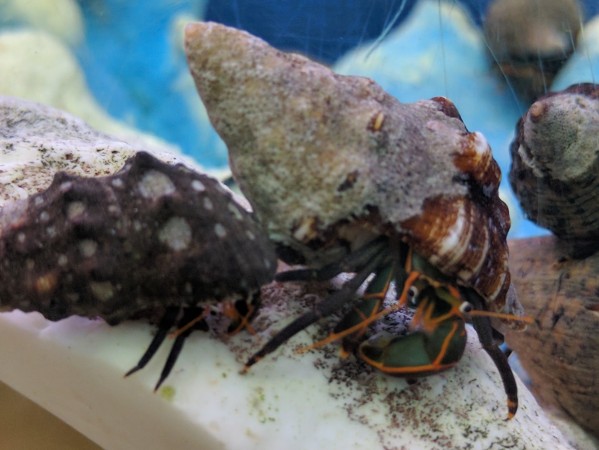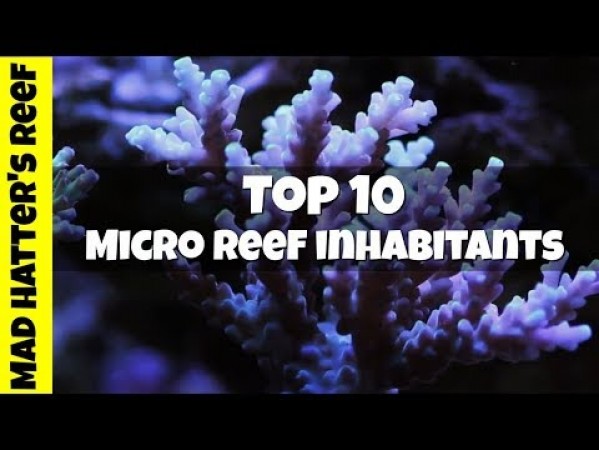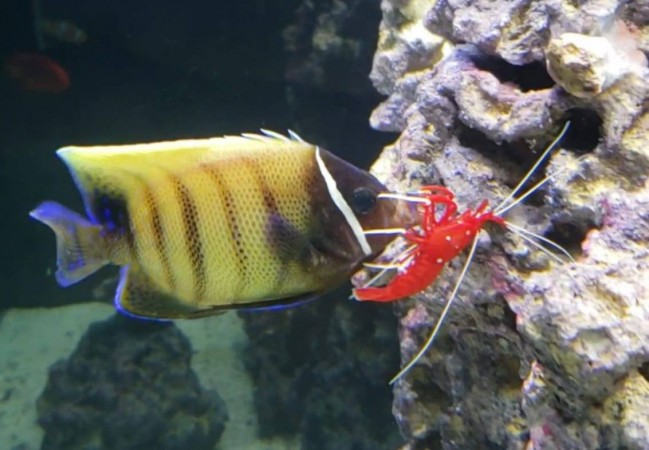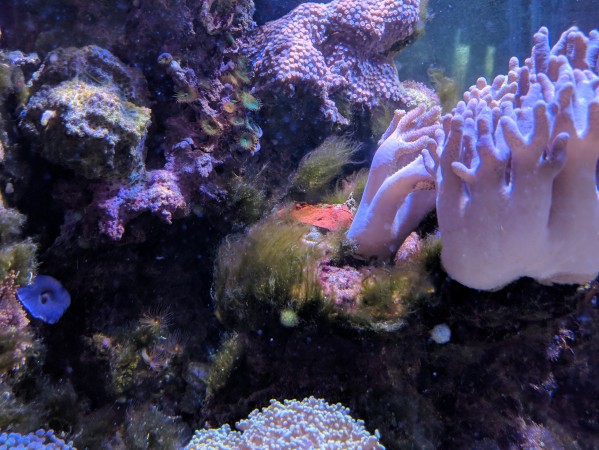- Name:
Dwarf Red Tip Hermit Crab
(View AKA's) - Family: Diogenidae
- Species: Crab
- Scientific Name: Clibanarius sp
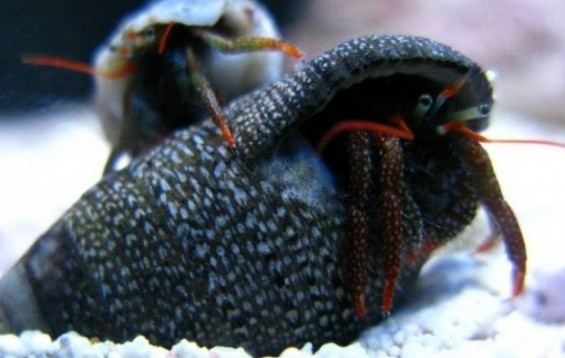

General info about Dwarf Red Tip Hermit Crab
The Dwarf Red Tip Hermit Crab is a voracious scavenger. Like its Blue Leg cousin, the Dwarf Red Tip Hermit Crab serves as an ideal member of your marine or reef aquarium's cleanup crew. This omnivore will scavenge all over your live rock and sand substrate - finding its way into the tightest of spaces - to feed on algae and detritus. Like other members of this genus, the Red Tip Hermit Crab has claws of equal size and, for this reason. Native to the coastal water surrounding Mexico, the Red Tip has a bright red face and legs. In the home aquarium, it does best in a saltwater reef or fish-only systems with sand substrates in which they can forage and dig. Its feeding methods also help aerate the sand bed and promote the growth of beneficial bacteria. The Dwarf Red Tip Hermit Crab should ideally be kept in a well-established system with plenty of algae and live rock to graze upon. Making its home in abandoned snail shells of various size and shape, be sure to offer empty shells to accommodate the growth of these small members of the Diogenidae family. Like other invertebrates, care needs to be taken during the acclimation process to prevent pH shock. Also, take special care to ensure an invertebrate-friendly environment free of predators and copper-based medications.
Dwarf Red Tip Hermit Crab Diet & Nutrition
The dwarf red tip hermit crab is an herbivore. They mainly scavenge on algae and cyanobacteria on live rocks. However, in instances of algae scarcity, it must be fed with dried seaweed.
Determining Sex of Dwarf Red Tip Hermit Crab
Sexing the Red Tip Hermit Crab is difficult and there are no definite ways of distinguishing their sex.
Dwarf Red Tip Hermit Crab Origin
It is native from the coasts of Mexico.
Caution with Dwarf Red Tip Hermit Crab
Caution must be done when combining the Red Tip Hermit Crab with other aggressive saltwater invertebrates. Like most invertebrates, the Red Tip Hermit Crab does not do well if there are large swings in water parameters. They also do not tolerate any types of metal traces in the water, there for you should never be in contact with any copper medications.
Acclimating Dwarf Red Tip Hermit Crab
Most invertebrates don't like large swings in water parameters and the Red Tip Hermit Crab is not an exception, so even though most hobbyists do not acclimate their cleaner crews it is suggested to do so. If you have a sump, float your cleaner crew in an area with low light to allow them to temperature acclimate first which should take about 15-20 min. Then it is best to slowly drip acclimate them to allow them to adjust to your water conditions.
Original Detail
| Name | Species | Family | Scientific Name | More Detail | Added by |
|---|---|---|---|---|---|
| Dwarf Red Tip Hermit Crab | Crab | Diogenidae | Clibanarius sp | The Dwarf Red Tip Hermit Crab is a voracious scavenger. Like its Blue Leg cousin, the Dwarf Red Tip Hermit Crab serves as an ideal member of your marine or reef aquarium's cleanup crew. This omnivore will scavenge all over your live rock and sand substrate - finding its way into the tightest of spaces - to feed on algae and detritus. Like other members of this genus, the Red Tip Hermit Crab has claws of equal size and, for this reason. Native to the coastal water surrounding Mexico, the Red Tip has a bright red face and legs. In the home aquarium, it does best in a saltwater reef or fish-only systems with sand substrates in which they can forage and dig. Its feeding methods also help aerate the sand bed and promote the growth of beneficial bacteria. The Dwarf Red Tip Hermit Crab should ideally be kept in a well-established system with plenty of algae and live rock to graze upon. Making its home in abandoned snail shells of various size and shape, be sure to offer empty shells to accommodate the growth of these small members of the Diogenidae family. Like other invertebrates, care needs to be taken during the acclimation process to prevent pH shock. Also, take special care to ensure an invertebrate-friendly environment free of predators and copper-based medications. |
Admin |
Changed by users
| Submitted Date | Submitted By | Status | Action |
|---|


